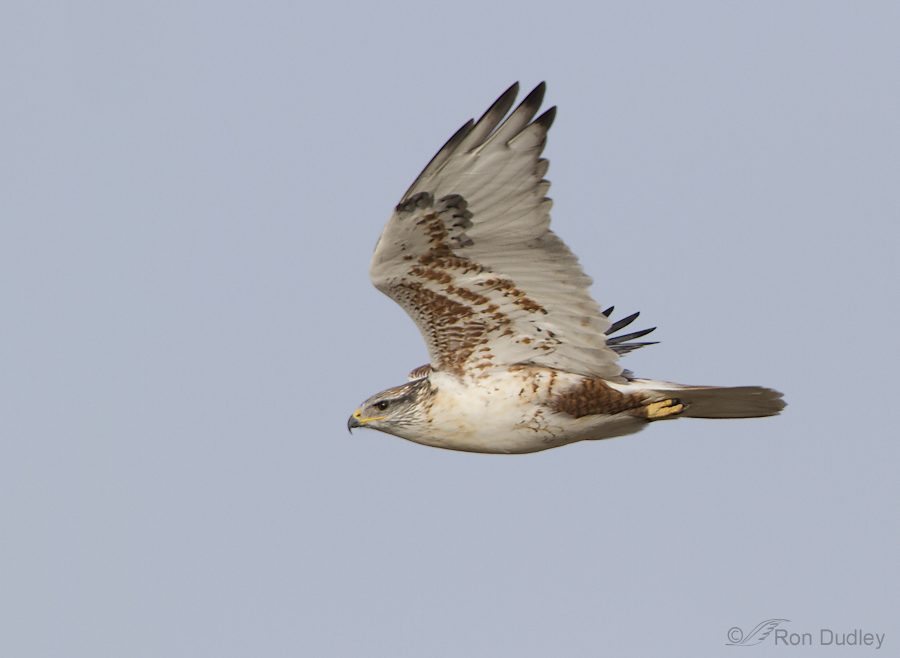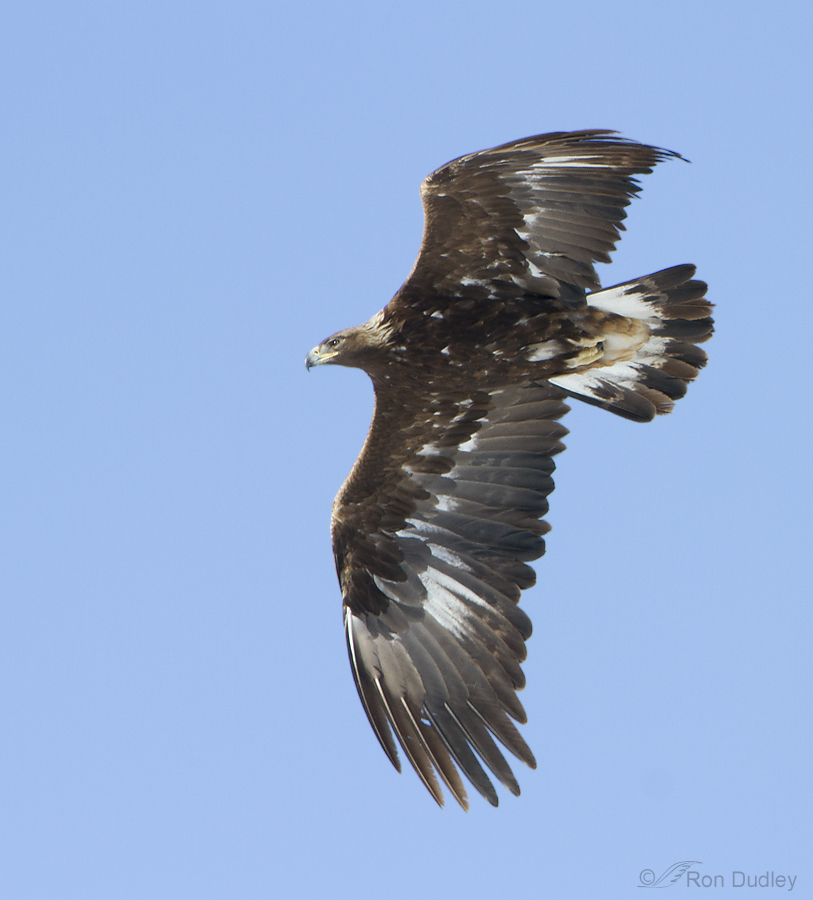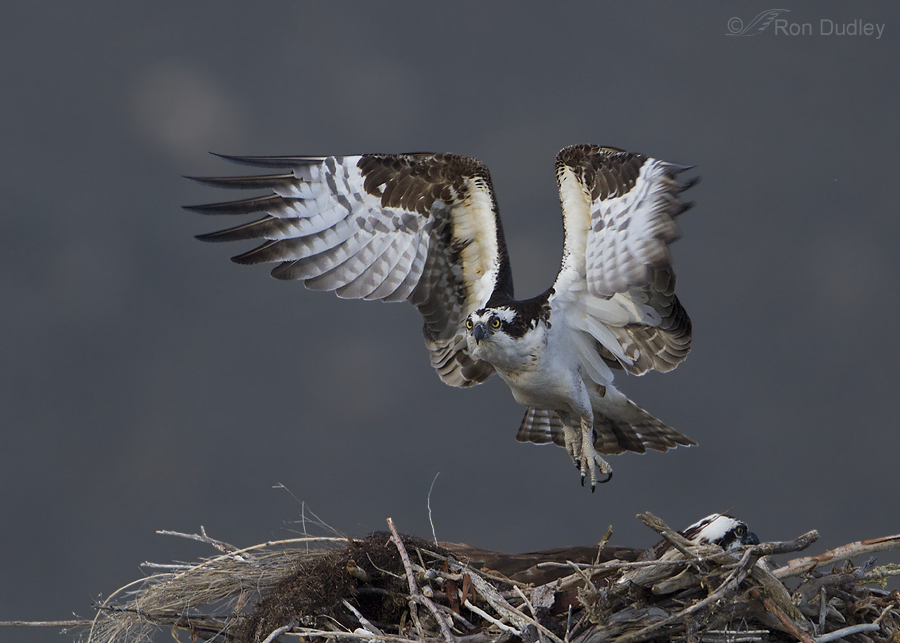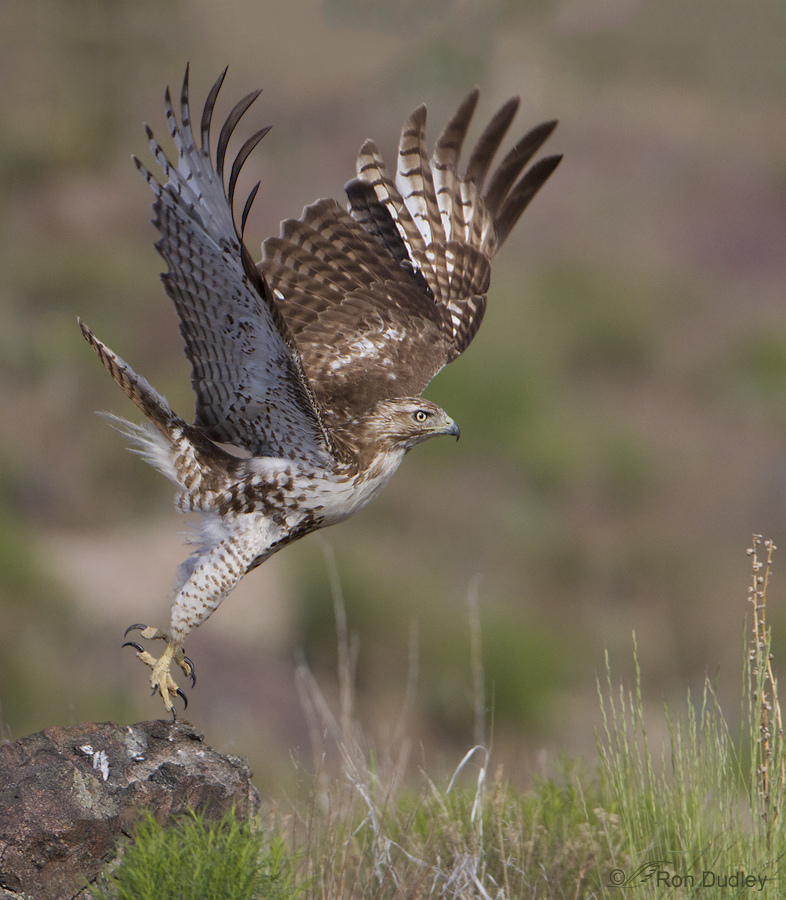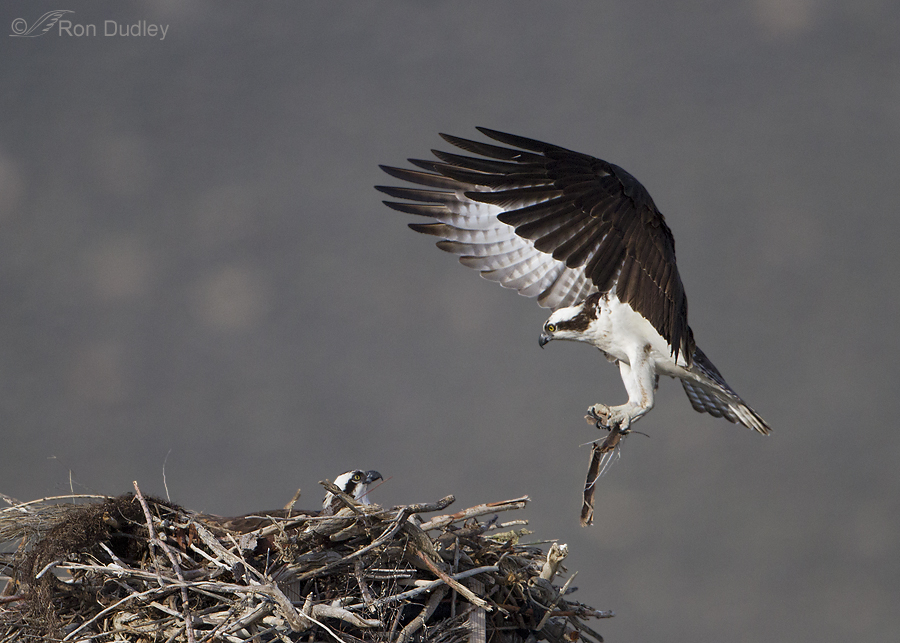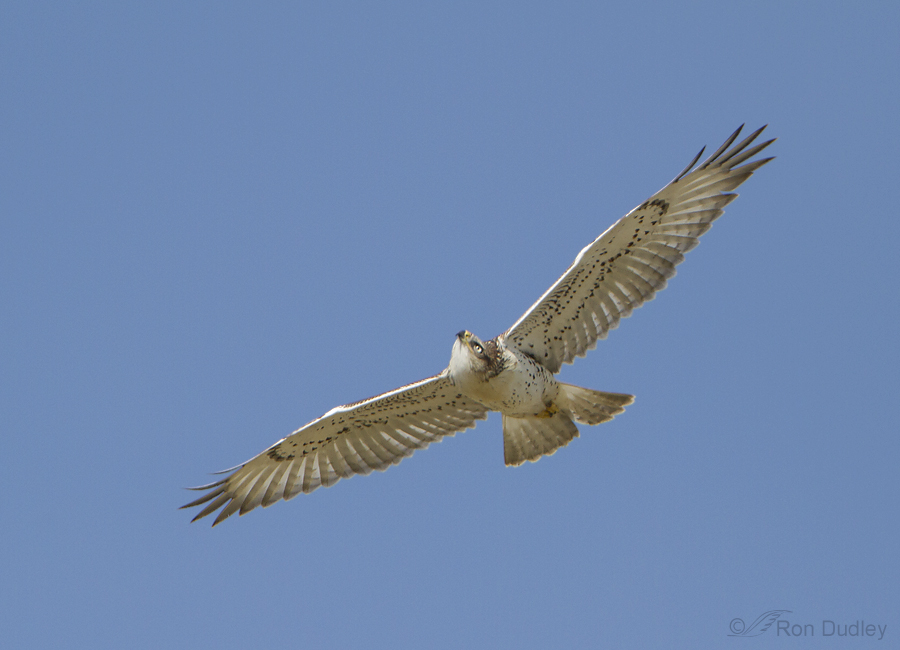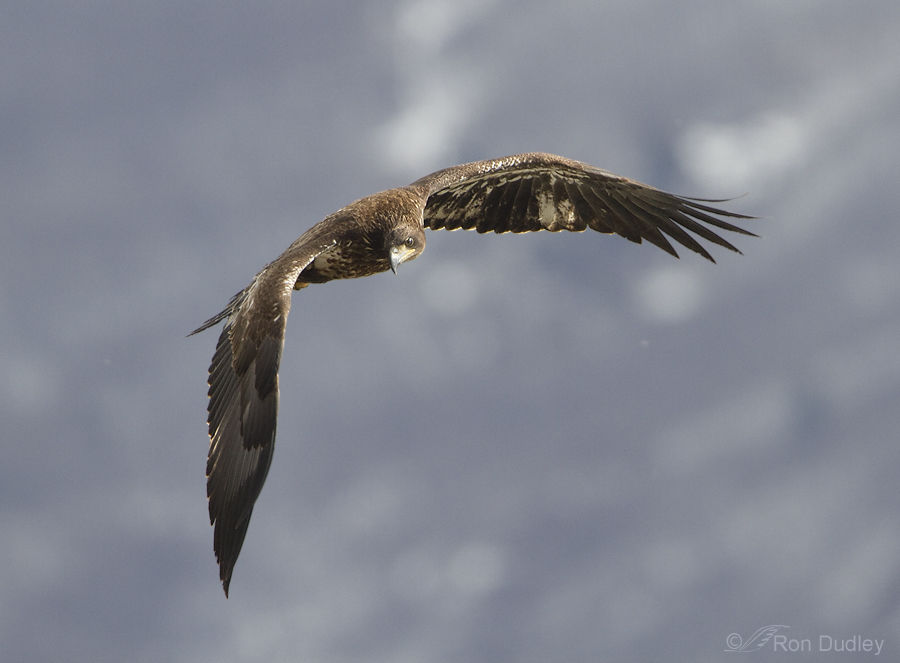Category: Diurnal Raptors
Golden Eagle In Flight
Red-tailed Hawk – A Twisting Take-off After Prey
The sturdy, broad-winged buteos tend to be large raptors with correspondingly slower movements than most smaller birds. Most of the time when I’m watching them they’re hunting from an elevated perch or soaring overhead and in neither situation do they typically demonstrate much quickness or agility.
But they can put on quite the show when they need to.
Male Osprey Landing At Nest
Light Red-tailed Hawk
American Kestrel With Peeling Beak
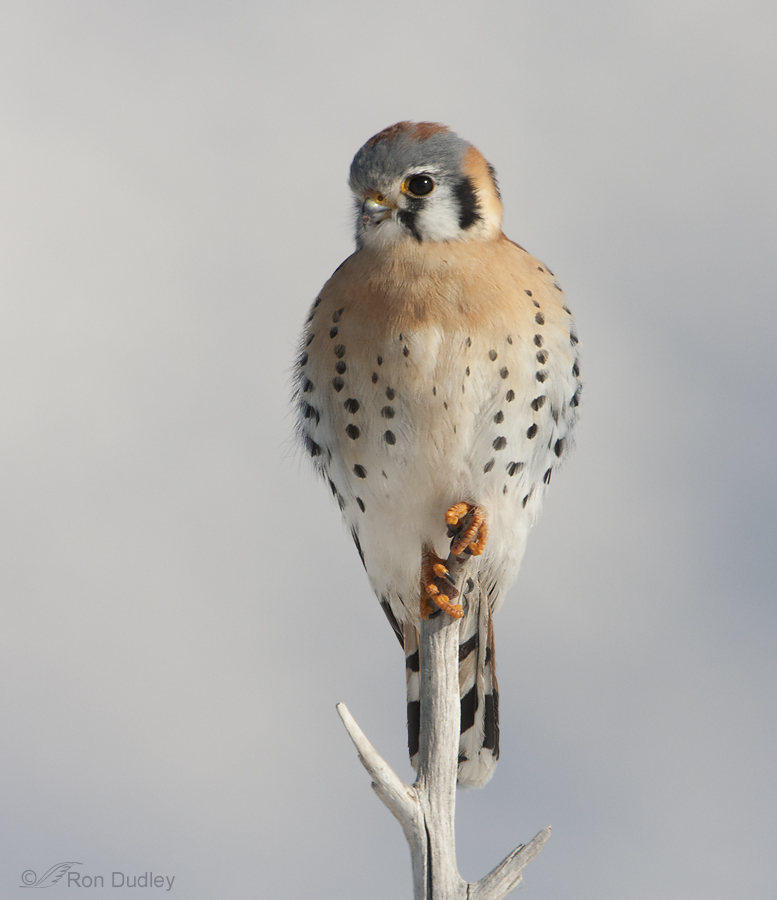
I’ve never before posted this image because of the “imperfection” of the peeling beak tip of this male American Kestrel. Bird beaks are largely composed of the protein keratin and like our fingernails are constantly growing. This can apparently cause flaking or peeling of the beak but I don’t understand why and so far internet research hasn’t provided the answer.
Ospreys In Shooting Conditions That Drove Me A Little Nuts(er)
Flaming Gorge Osprey – An Experiment That Worked
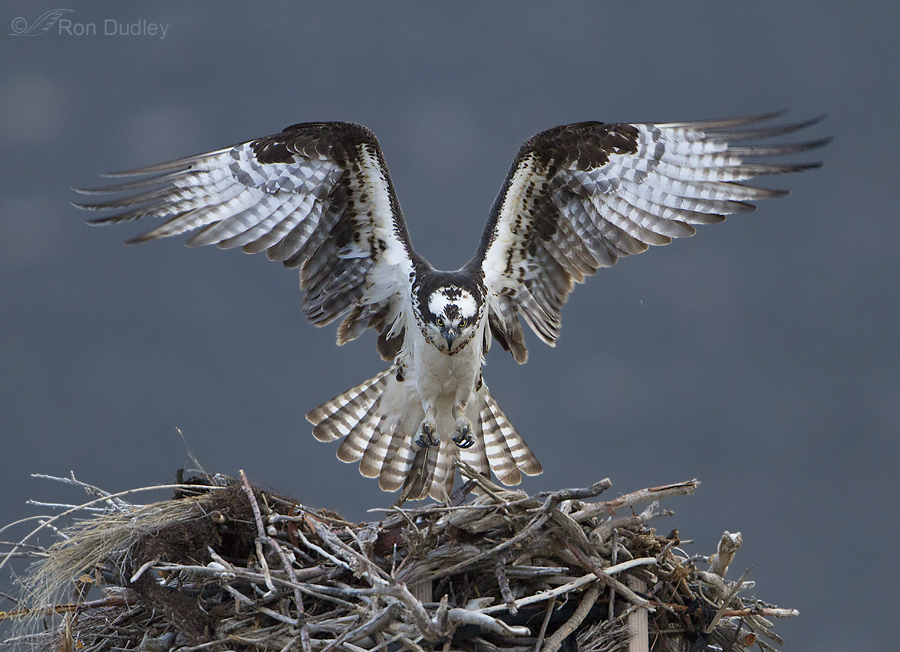
We returned home Thursday after spending three wonderful days camping at Flaming Gorge in NE Utah. This is very close to the view we had on most mornings from our campsites (two of them), though this image was taken the morning before the Osprey photo, below. As you’ll see, the lighting conditions were dramatically different…
Ferruginous Hawk In Flight
A Compositional Conundrum – Immature Bald Eagle
A Plucky Female American Kestrel Saves My Day
Sometimes a single bird saves the day for the bird photographer. That was exactly the case last Wednesday.
Fluffed Up Kestrel In Warm Light
Just a simple shot of a handsome little male American Kestrel this morning.
I’m still concerned about our kestrels this spring. I’m seeing fewer of them than usual for this time of year and hearing reports of a significant number of unused nest boxes and dead kestrels found in some of those boxes (apparent winter-kills).
A Bird Photographer’s Conundrum – Red-tailed Hawk
Sunday morning we visited Utah’s west desert to see what we could turn up out there. We found a pair of American Kestrels, a few Swainson’s Hawks, one Ferruginous Hawk, several Turkey Vultures apparently feeding on a dead calf and four Red-tailed Hawks. But most were difficult to approach, in bad light or on ugly perches. Note: Some of this post may be of interest only to photographers. I apologize in advance to those of you interested more in the results of bird photography than in the process… 1/2500, f/6.3, ISO 640, 500 f/4, natural light, not baited, set up or called in But we did find the nesting pair of red-tails that I’ve posted about previously. This bird was perched up a canyon near the nest where its mate was incubating eggs. I caught the hawk at lift-off… 1/2500, f/6.3, ISO 640, 500 f/4, natural light, not baited, set up or called in and immediately after… 1/2500, f/6.3, ISO 640, 500 f/4, natural light, not baited, set up or called in and I was able to keep the bird in focus for a long burst of 22 images as it flew to my left. The problem was that it had been perched above me on a hill so when it took off it mostly glided with its wings straight out and shaded underneath so many of those shots aren’t particularly interesting. 1/2500, f/6.3, ISO 640, 500 f/4, natural light, not baited, set up or called in This was the last image with any light under the wings….
How Can This Hawk Even Fly?
This might just be the rattiest looking raptor I’ve ever encountered in the wild.
I found this juvenile Red-tailed Hawk three days ago in Box Elder County, Utah. It was too far away for good photos but even so I scoped it out with my lens for ID and to look for anything unusual.
Prairie Falcon – A Dilemma
On this morning as I was leaving Antelope Island after a morning of shooting I was, as always, watching for a Prairie Falcon along the causeway. Occasionally I’ve been lucky with that strategy but it doesn’t happen very often. One advantage I had is the fact that if there was one there it would likely be perched on the rocks next to the Great Salt Lake. With that dark blue background, the bright whites on the breast of the falcon are often easy to spot. And that’s exactly what happened.
Golden Eagle In Flight
Red-tailed Hawk – A Twisting Take-off After Prey
The sturdy, broad-winged buteos tend to be large raptors with correspondingly slower movements than most smaller birds. Most of the time when I’m watching them they’re hunting from an elevated perch or soaring overhead and in neither situation do they typically demonstrate much quickness or agility.
But they can put on quite the show when they need to.
Male Osprey Landing At Nest
Light Red-tailed Hawk
American Kestrel With Peeling Beak

I’ve never before posted this image because of the “imperfection” of the peeling beak tip of this male American Kestrel. Bird beaks are largely composed of the protein keratin and like our fingernails are constantly growing. This can apparently cause flaking or peeling of the beak but I don’t understand why and so far internet research hasn’t provided the answer.
Ospreys In Shooting Conditions That Drove Me A Little Nuts(er)
Flaming Gorge Osprey – An Experiment That Worked

We returned home Thursday after spending three wonderful days camping at Flaming Gorge in NE Utah. This is very close to the view we had on most mornings from our campsites (two of them), though this image was taken the morning before the Osprey photo, below. As you’ll see, the lighting conditions were dramatically different…
Ferruginous Hawk In Flight
A Compositional Conundrum – Immature Bald Eagle
A Plucky Female American Kestrel Saves My Day
Sometimes a single bird saves the day for the bird photographer. That was exactly the case last Wednesday.
Fluffed Up Kestrel In Warm Light
Just a simple shot of a handsome little male American Kestrel this morning.
I’m still concerned about our kestrels this spring. I’m seeing fewer of them than usual for this time of year and hearing reports of a significant number of unused nest boxes and dead kestrels found in some of those boxes (apparent winter-kills).
A Bird Photographer’s Conundrum – Red-tailed Hawk
Sunday morning we visited Utah’s west desert to see what we could turn up out there. We found a pair of American Kestrels, a few Swainson’s Hawks, one Ferruginous Hawk, several Turkey Vultures apparently feeding on a dead calf and four Red-tailed Hawks. But most were difficult to approach, in bad light or on ugly perches. Note: Some of this post may be of interest only to photographers. I apologize in advance to those of you interested more in the results of bird photography than in the process… 1/2500, f/6.3, ISO 640, 500 f/4, natural light, not baited, set up or called in But we did find the nesting pair of red-tails that I’ve posted about previously. This bird was perched up a canyon near the nest where its mate was incubating eggs. I caught the hawk at lift-off… 1/2500, f/6.3, ISO 640, 500 f/4, natural light, not baited, set up or called in and immediately after… 1/2500, f/6.3, ISO 640, 500 f/4, natural light, not baited, set up or called in and I was able to keep the bird in focus for a long burst of 22 images as it flew to my left. The problem was that it had been perched above me on a hill so when it took off it mostly glided with its wings straight out and shaded underneath so many of those shots aren’t particularly interesting. 1/2500, f/6.3, ISO 640, 500 f/4, natural light, not baited, set up or called in This was the last image with any light under the wings….
How Can This Hawk Even Fly?
This might just be the rattiest looking raptor I’ve ever encountered in the wild.
I found this juvenile Red-tailed Hawk three days ago in Box Elder County, Utah. It was too far away for good photos but even so I scoped it out with my lens for ID and to look for anything unusual.
Prairie Falcon – A Dilemma
On this morning as I was leaving Antelope Island after a morning of shooting I was, as always, watching for a Prairie Falcon along the causeway. Occasionally I’ve been lucky with that strategy but it doesn’t happen very often. One advantage I had is the fact that if there was one there it would likely be perched on the rocks next to the Great Salt Lake. With that dark blue background, the bright whites on the breast of the falcon are often easy to spot. And that’s exactly what happened.


